#Tachikawa yuzuru
Text
Chatty AF 185: Death Parade Retrospective – Part 1
Caitlin, Cy, and Toni celebrate the 10th anniversary of a cult classic by Mob Psycho 100 director Tachikawa Yuzuru!
Episode Information
Date Recorded: October 30th 2022
Hosts: Caitlin, Toni, Cy
Episode Breakdown
0:00:00 Intros
0:02:51 Content warnings
0:04:23 Summary
0:05:45 Background
0:06:57 Deca-Dence
0:09:40 Mob Psycho 100
0:12:58 Tachikawa’s themes
0:15:40 Personal experiences with Death Parade
0:22:42 That OP
0:27:07 Decim
0:33:38 Ginti
0:34:44 Mayu
0:37:23 Chiyuki
0:42:31 They don’t make ‘em like they used to
0:44:18 Ginti (again)
0:48:55 Mayu and Ginti
0:51:26 The administrators
0:53:45 Nona
0:58:45 Similarities to theatre
1:00:41 Outro
27 notes
·
View notes
Text
i would like to talk abt how yuzuru tachikawa went OFF in storyboarding/directing the separation arc w/ the use of natural and artificial light on reigen.
we only see his face w natural light before opening s&s

and then after his fallout with mob, it’s only behind him.
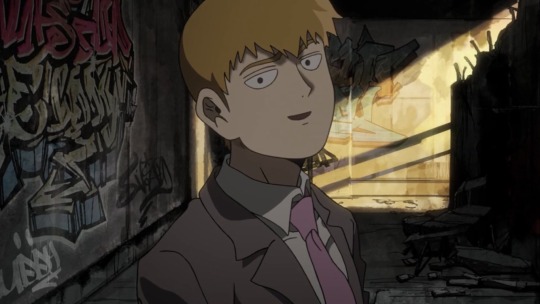
his face becomes illuminated by only his laptop in his apartment

also after mob leaves him, the blinds in the office are closed compared to when he first started. this is the window that originally showed him the light. he is subconsciously shutting out that dream of “being somebody”
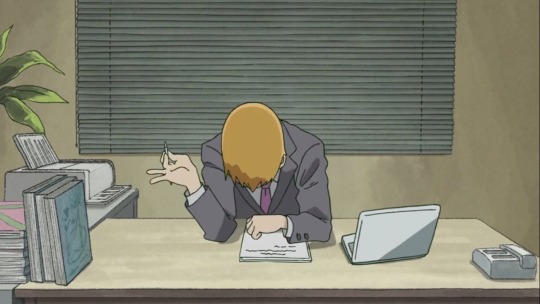
more under cut!!
the only exception to this rule is his convo w/ ekubo, who is the character he can be the most honest to.
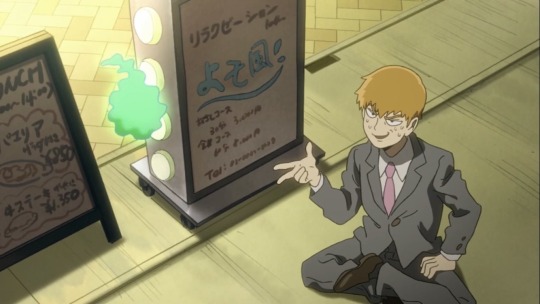
when we get to the bar scene, it’s nighttime, so there’s ONLY artificial light. it’s framed similar to him looking out the s&s window, which was the last time he was able to live w/o the fake “psychic” title. except now, it’s lit blue instead of warmly.


he wants the same thing, but the second time is leading him to a path of self destruction: like a moth to a flame.

when we get to the Cancellation, he’s under studio lights and, later, camera flashes. the lights are brighter but his shadows are harsher. he’s being seen but in the worst way possible.

lastly, you’d expect sunlight to be on his face when mob tells him he’s a good person, but it stays in the shadows because reigen doesnt Say it. he hasnt Told mob hes a fraud. you can see the shadows creep into his face when he lifts his face. the good part of him is acknowledged
#mp100#mob psycho 100#reigen arataka#arataka reigen#mine#text#this was a twitter thread i wanted to archive it here#i forgor abt the 10 pic limit 😭 i wanted to add more but i cannot#oh well#hope u liked this analysis!!#and thank u yuzuru tachikawa!!!!!!
4K notes
·
View notes
Text




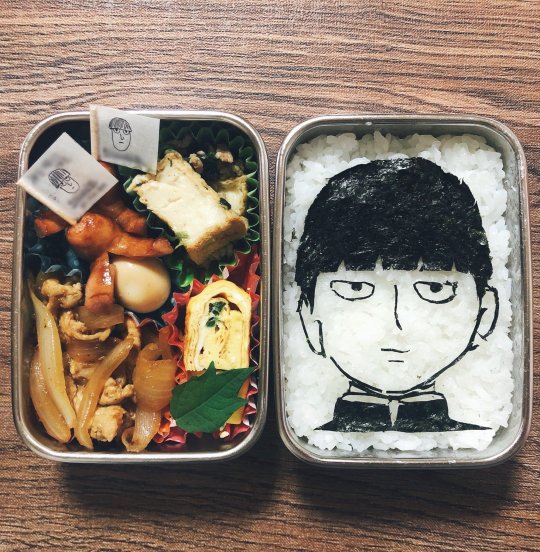
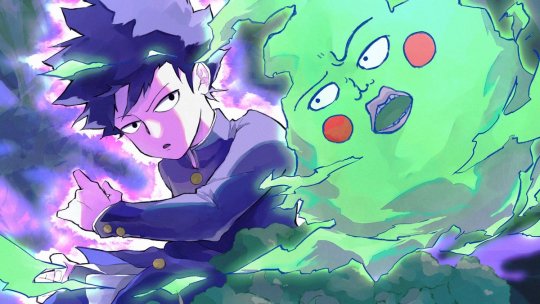

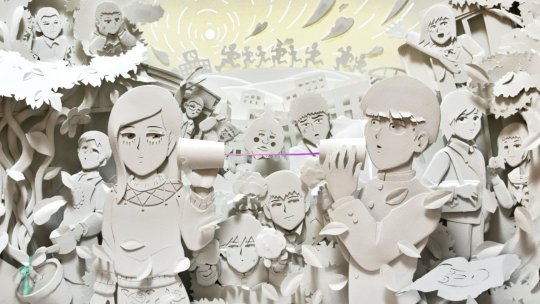

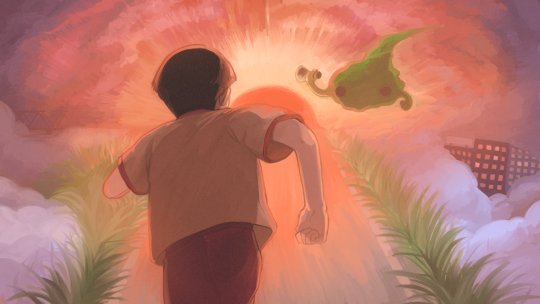
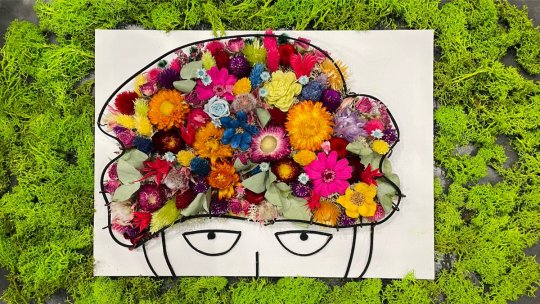
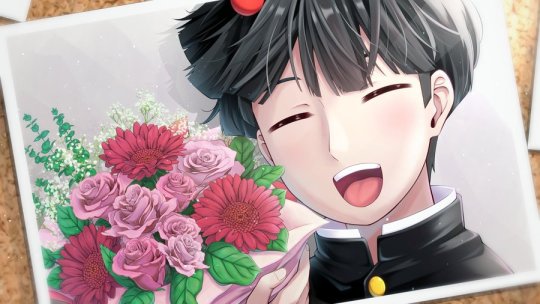
Mob Psycho 100 III End Cards
#mob psycho 100#mp100#mob psycho 100 spoilers#mp100 spoilers#end card#i adore end cards so much i had to compile these#i had no idea on some of the talent behind these:#Takahiro Hasui. Yuzuru Tachikawa#Setsuo Itou. Sakurai Takahiro#ONE-sensei?! i saw that image weeks ago and somehow never noticed it was drawn by him#qulo talks#100
149 notes
·
View notes
Text

"Chiyuki"
Chiyuki was a surprisingly nice character! I don't often love female character in anime, so... x3
#art#drawing#illustration#digital#digital artist#artists on tumblr#digital art#oc#character#painting#digital drawing#digital illustration#digital painting#chiyuki#death parade#yuzuru tachikawa#yuzuru#tachikawa#anime#manga#anime fanart#fanart#fan art#fandom#manga art#manga fanart
11 notes
·
View notes
Photo
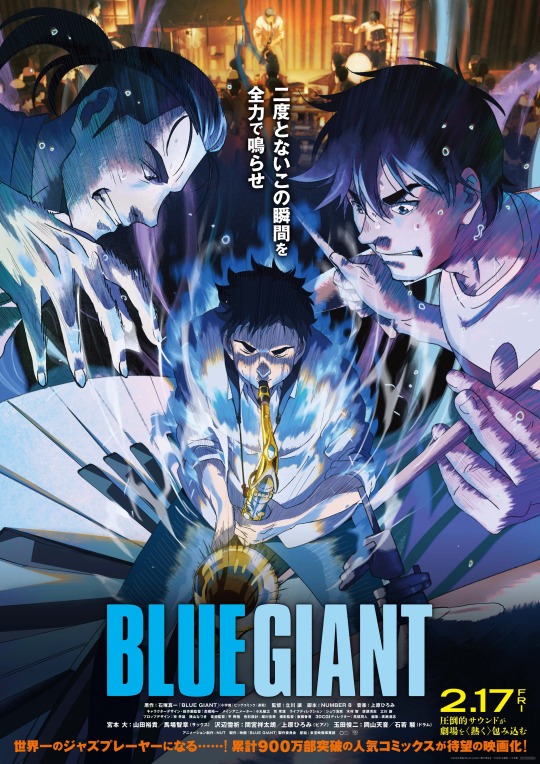
BLUE GIANT
Directed by Yuzuru Tachikawa 立川譲
2023 Japan
29 notes
·
View notes
Text
Interview of Death Parade Staff - Key Animators
The Appeal of Key Animation and the Joy of Animation Supervision
Animator Roundtable Discussion
Shōsuke Ishibashi / 石橋 翔祐 [Key Animator]
Takashi Kojima / 小島 崇史 [Key Animator]
Ryōta Azuma / 東 亮太 [Animation Director / Key Animator]
Izumi Murakami / 村上 泉 [Prop Design / Key Animator]
— Please tell us about a memorable scene from "Death Parade" that you participated in
Azuma: I have mainly worked on PD Takuya's works, which is how I got involved in Death Parade. I was given the opportunity to be the animation director for episode six, which was a very unique episode. To be honest, I didn't have much experience as an animation director, so key cuts were handled by Kojima-san, Ishibashi-san, Murakami-san, and other skilled animators and artists, who made the important scenes more appealing. Especially Ishibashi-san. His cuts were the first to get delivered, and they had an enormous number of keyframes where Mayu was moving ecstatically with very detailed acting. It was completely different from the keyframes I usually draw, so I was shocked to see how he handled it. It had a positive influence on me.
Murakami: I think Ishibashi-san created Mayu's character.
Ishibashi: No, that's not it. Since I participated in episode six first, Mayu was the first character I animated. I was like, "Huh? Decim hasn’t shown up yet," (laughs). I worked on episode 4 afterwards.
Murakami: When I joined, Ishibashi-san's rough animation was already complete, so I watched the footage and thought, "Mayu is a girl who moves like this," and I understood what to do. Also, Episode Director Shishido was the type to entrust a lot to the animators.
Kojima: Yes, Shishido [Jun]-san's storyboards are very easy to visualize in motion. Speaking of memorable things, in Death Parade, there were many scenes where the space was constructed in 3D, right?
Ishibashi: Yeah, that's right. The first scene I worked on was in front of the bar counter in Viginti in episode six. It was challenging because it was not originally constructed in 3D. But then when I started working on other episodes, I realized that this [3D layout] was easy.
Kojima: Working with 3D layouts means you don't have to draw backgrounds [laughs], which is convenient, but I also worried that neglecting to draw them might make my skills in that area rusty, so I had some doubts about whether it was the right approach.
Ishibashi: I understand that. But drawing so many kokeshi dolls was tough...
Murakami: Oh, I'm sorry. It's my fault that there were so many kokeshi dolls. When I was asked by Tachikawa-san (series composer and director) to design a Japanese-style bar, I thought it would be nice to have lots of kokeshi dolls lined up like bottles of alcohol, so I drew the image board with that in mind...
— PD Takuya and Kurita-san mentioned that Kojima-san broadened the range of character acting in Death Parade.
Kojima: Is that so? That's great to hear. In the first episode we worked on around 55 cuts, and during the meeting, either Director Tachikawa or Director Shishido-san requested that I present the acting with all the intensity of someone emotionally breaking down in tears at a press conference. So, I watched some videos for reference and drew accordingly. When it came to the ninth episode, I was initially consulted about the air hockey scen, but wanting to try something new, I asked to work on the scene where Shimada's sister is assaulted instead.
Ishibashi: I thought you were definitely going to choose hockey, so I was like, "Oh, this is it?” (laughs). The cut with the light glinting on the knife,�� the acting was so skillful there that we left it untouched and just let it run as it was.
Kojima: (laughs) Well, I can't help but feel like I've been doing nothing but pitiful scenes most of the time. Also, the skating scene in episode eleven was very difficult.
Ishibashi: That scene was mainly handled by Murakami-san, right? I also participated a bit, like drawing the childhood skating scenes.
Kojima: I was allowed to draw the start of the skating scene. I did about 4 cuts in that area.
Murakami: As for me…I am filled with a feeling of wanting to fix it…
Ishibashi: No, you did really well. You had quite a number of cuts, right?Murakami: The number of cuts was around twelve. With everyone's help, we managed to complete it somehow. We had assistance from the 2nd key animation team as well.
— It seems that episode eleven had one of the stricter schedules among all the episodes.
Ishibashi: Indeed, I was worried about whether we could really broadcast the episode or not, but the atmosphere in the studio wasn’t tense at all, and I felt very good. It was more like, "Can we do it?" rather than "Oh no, oh no!" (laughs). In the end, we managed to complete it (laughs).
Murakami: While drawing, I kept thinking, "I can't believe this is going to air in a week," "unbelievable."
Ishibashi: I think it was because Kurita-san, PD Takuya, and desk clerk Nakatani (Satoshi) were people who had such a reassuring presence. When I heard laughter coming from their corner, I thought, "As long as Tachikawa-san is laughing, it will still be OK.”
— Who was the easiest character to draw?
Azuma: The dark-haired woman was relatively easy to draw, but Decim was quite challenging to get right. Kurita-san's designs are characterized by having their mouths positioned lower on their jaws, but when I started drawing, I unconsciously kept placing the mouth too high…
Kojima: All the main characters were difficult. Decim especially was a total struggle for me. Personally, I might not be good with characters who lack expressions. I found it enjoyable to draw characters with expressive faces or those in despair.
Ishibashi: I found the dark-haired woman somewhat difficult to draw, but Decim was relatively easier for me. With guest characters, there was some flexibility in altering their faces, which might have been influenced by Kojima-kun's work in episode 1, where he broadened the scope of the acting.
Murakami: I had already given up on trying to make them look on-model (laughs). Kurita-san's characters, when drawn by him, are very beautiful, but if you don't draw them well, the balance gets messed up. It's beyond me... (laughs). Also, in episode six, drawing Memine the cat was challenging.
Azuma: But you were the one who could draw the cat the best. It was really helpful while working as an animation director.
Murakami: Really? I didn't know what to do, so I started with a lot of cat sketches.
Ishibashi: In episode six, Murakami-san drew great facial expressions in the live scene in the C part. Especially when everyone was like, "Yay!" (laughs). Speaking of what left an impression on me, in episode nine where I was the animation director, Hiromi Ishigami-san, Ryoma Ebata-san, Tetsuya Masuda-san, and Akitsugu Hisagi-san participated as key animators, and it was really enjoyable. Ishigami-san is my senior, but it had been about 7 years since I last saw her original drawings, and I was again impressed by how good she is. Ebata-san's presentation of Tatsumi smoking a cigarette and putting it out with his foot had a very good sense of perspective. Ebata-san was also in charge of the part during the ending theme, where the emotions were conveyed amazingly even without any dialogue. And Masuda-san also did a lot of keyframes. I personally like Masuda-san's drawings, so I got excited whenever I received his keyframes... But even though I'm talking so familiarly, I don't actually know Masuda-san at all (laughs).
— So you've only seen his keyframes.
Ishibashi: That's right. So when I came to the studio for the animation meetings, I wanted to meet him... I was saying "Masuda-san, Masuda-san" so much that they thought we were old acquaintances, but no one told me "Masuda-san is here" (laughs). I was shocked (laughs).
Azuma: As an animation director, it makes me happy when I receive wonderful keyframe drawings. This time, there were a lot of good people of a similar age as me who participated, and I was glad that I was able to get a lot of inspiration from them.
Kojima: As for what left an impression... Well, due to certain circumstances, I didn't work inside the building, so I feel like there's a bit of a difference in atmosphere here (laughs). But if I had been working inside, it would have been a bit more enjoyable, so it's a bit disappointing (laughs).
Ishibashi: Kojima-kun and I have worked together at a different company before so I was looking forward to working together again, but when I heard that you wouldn't be joining the company, I was a little disappointed.
Kojima: Since I didn't have many opportunities to meet people this time, I'll try my best to work in the studio next time (laughs).
Ishibashi: (laughs) Speaking of disappointments... Personally, I wish I could have seen more of Kurita-san's keyframes. Like in the first episode, the scene where Decim pulls out the thread. Or in part C of episode three, when Chiyuki does that flourish at the end. Every time I thought, "Who did this!?", it turned out to be mostly Kurita-san (laughs). Kurita-san always talks as if he hasn't done anything, but I thought that was unfair.
Murakami: He did mention he wanted to do keyframes.
Ishibashi: When someone is that skilled, of course they would want to do keyframes. As an animation supervisor, you're in a supportive role, helping with the difficult parts and making sure the characters are on-model, so the keyframes are more exciting.
Kojima: But as a Chief Animation Supervisor, Mr. Kurita, was able to make corrections in a way that preserved the good points of the person in charge of the original drawings, and I think this is one of the reasons why I enjoyed working on this project.
— Murakami-san, is there any particular scene that left an impression on you?
Murakami: Working on the figure skating scenes was really fun, but bowling was also really enjoyable. My previous project [Ace of Diamond] also had sports-related elements. Sports movements are different from everyday actions; they're very straightforward. For example, if you're "throwing a ball," you're solely focused on the act of throwing. That aspect makes your work very focused and exciting. During the bowling scenes, I consciously tried to convey the weight of the ball. However, the fun part is from drawing to the rough animation. When you’re in it, you think, "This might work," but when it comes together as a finished visual, you end up reflecting, "It's not as good as I hoped," right? Ishibashi, isn't that how all animators feel? [Ishibashi laughs]. The linetest is probably the most intense emotionally (laughs). There's no color or anything decided, so your imagination can run wild.
— It seems like the animators had quite a bit of freedom in their drawings, from what I've heard.
Ishibashi: When we were asked to "do this part," there were many areas where we had a lot of freedom. It might have been a bit challenging, but it allowed animators to expand their creativity.
Kojima: It was easy for me too. I really enjoyed the work.
Azuma: Especially with guest characters, since they only appear in that particular episode, I think they were given a lot of freedom to draw. Mayu in episode six, for example, was a character where we were told we could go all out with the comedic, exaggerated expressions, so there was a lot of freedom.
Ishibashi: Mayu's face when she's hit with wind from below was really something (laughs).
Murakami: Yes, there were many cuts where we could do whatever we wanted with the acting.
Ishibashi: When we were asked to "do this part," there were many areas where we had a lot of freedom. It might have been a bit challenging, but it allowed animators to expand their creativity.
Kojima: It was easy for me too. I really enjoyed the work.
Azuma: Especially with guest characters, since they only appear in that particular episode, I think they were given a lot of freedom to draw. Mayu in episode six, for example, was a character where we were told we could go all out with the comedic, exaggerated expressions, so there was a lot of freedom.
Ishibashi: Mayu's face when she's hit with wind from below was really something (laughs).
Murakami: Yes, there were many cuts where we could do whatever we wanted with the acting.
— Looking back on the series, were there any episodes that left a deep impression on you?
Kojima: I like episodes eight and nine. They're a bit gut-wrenching, but there's something about the feeling of hopelessness that I appreciate. You don't see stories like that often.
Ishibashi: I'm quite sensitive, so watching sad stories makes me sad too. I prefer more gentle endings, like in episode three. Also, the farewell between Chiyuki and Decim in episode twelve, that scene made me cry a lot (laughs).
Murakami: When I saw episode twelve, I thought, "I was doing a ‘good story’ anime" (laughs). This series had different vibes for each episode, which was interesting, but episode six had a really good balance... The story was wild, and so was the animation. It was a lot of fun to watch. However, just before it aired, I started worrying, "Did we go too far?" "Is it going to be okay?" Even Shishido-san, who storyboarded it, was worried.
Azuma: Is that so? I thought episode six was interesting from the moment I started working on it (laughs). So, I wasn't worried at all. I was like, "It's definitely going to be fun! Watch it!"
Ishibashi: Actually, what made me wonder if it would be okay was the opening. When I first saw the storyboard, I thought, "Huh? Is this really for Death Parade?" (laughs).
Azuma: Yes, that's right. When I heard the song, I was so excited that I thought, "Oh! (laughs). [Murakami laughs] Overall, this project was challenging, but it was also enjoyable.
━┅━┅━┅━┅━┅━┅━┅━┅━┅━
NOTE: I am not fluent in Japanese! I translated this with the help of a language partner. However, as neither of us are fluent in one another's native tongue, there may be errors in the translation. I typically don't share things I translate in my free time, but since no one has tackled these interviews in nearly 10 years, I figured it was nice to put these out there for folks who may be interested.
#death parade#anime#translation#interview#anime interview#takashi kojima#yuzuru tachikawa#mayu arita#ginti#decim#chiyuki#cloudytranslates
3 notes
·
View notes
Text


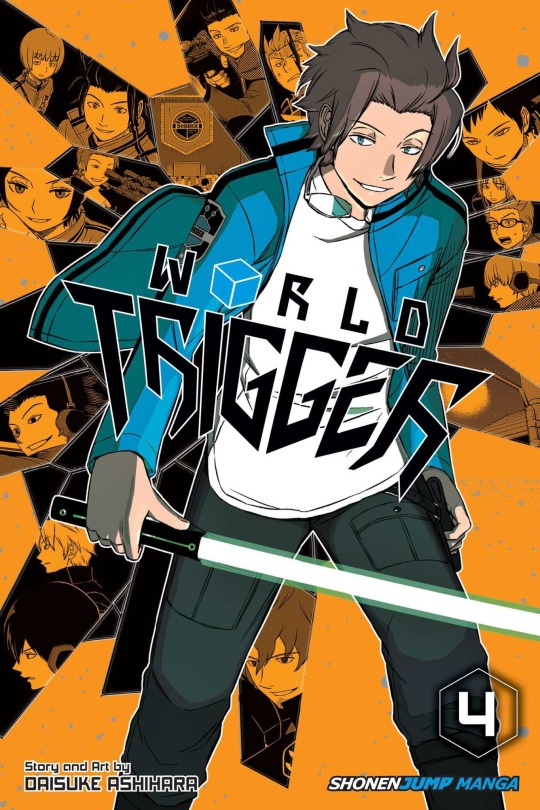

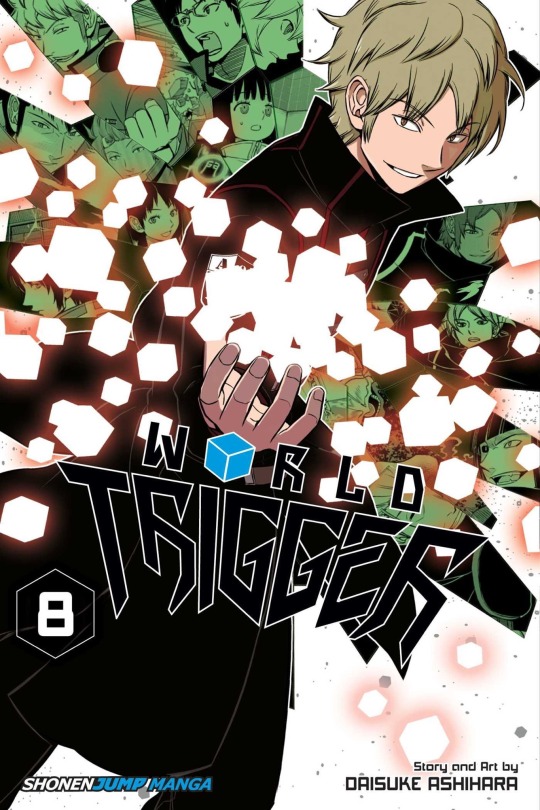

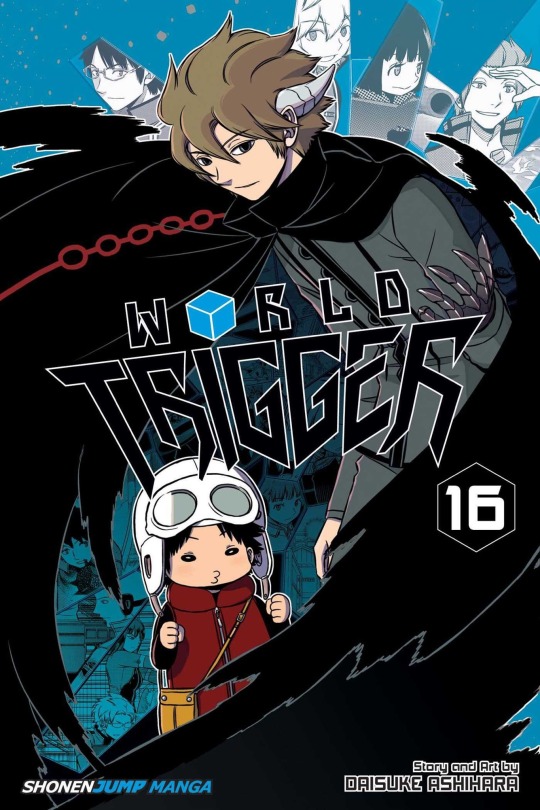
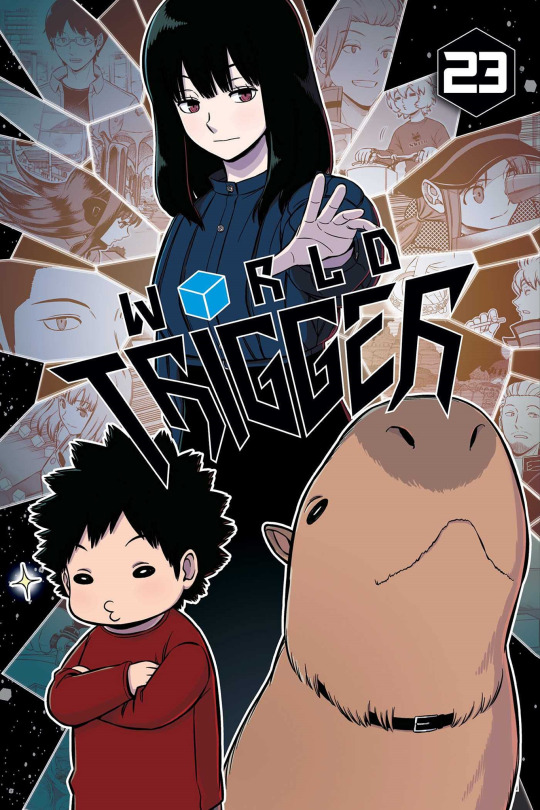


WORLD TRIGGER - Covers 1/2
#world trigger#kuga yuuma#jin yuichi#tachikawa kei#ninomiya masataka#hyuse#osamu mikumo#chika amatori#yuichi jin#izumi kohei#yuzuru ema#katori#replica
46 notes
·
View notes
Text
#anime#animation#sakuga#chainsaw man#ryu nakayama#mob psycho 100#yuzuru tachikawa#yoshimichi kameda#do it yourself#mitsuo iso#yusuke matsuo#bocchi the rock!#keiichiro saito#kerorira#yama no susume#pui pui molcar#tomoki misato#hana ono#pop team epic#mobile suit gundam the witch from mercury#g-witch#hiroshi kobayashi#ichiro okouchi#the tatami time machine blues#shingo natsume#arknights: prelude to dawn#yuki watanabe#cool doji danshi#eri taguchi#bleach
15 notes
·
View notes
Photo

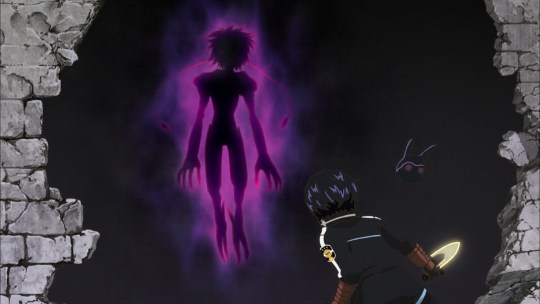

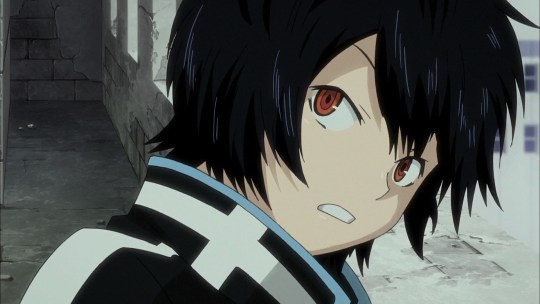
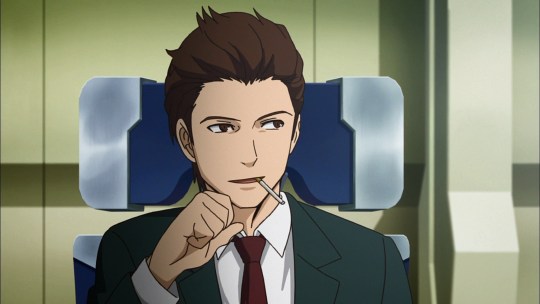

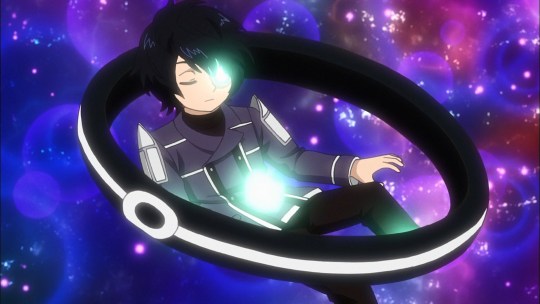
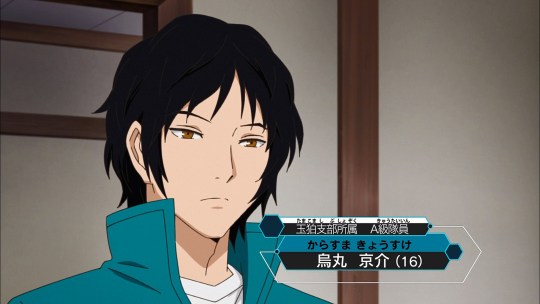


World Trigger - Some random cap

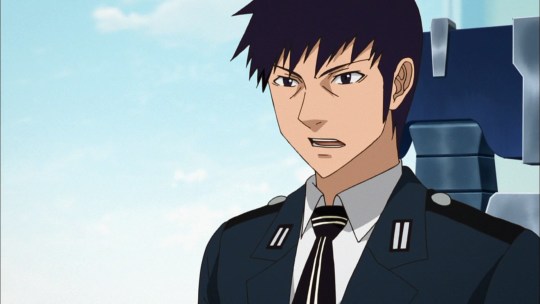

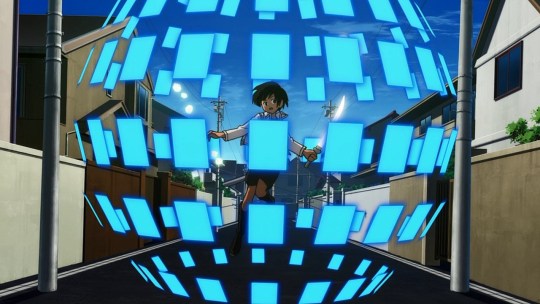

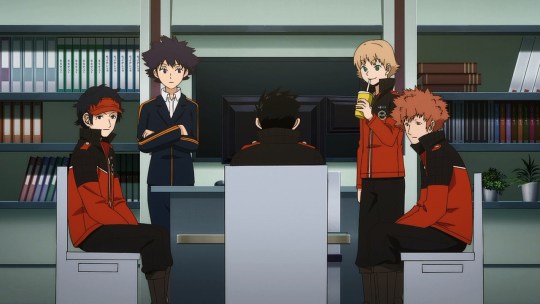





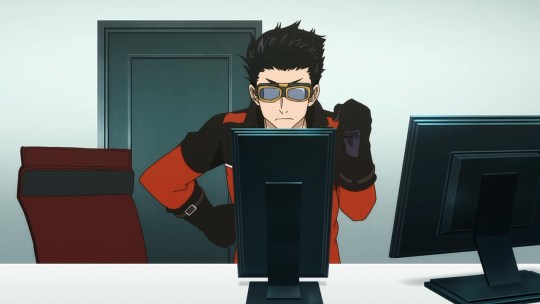





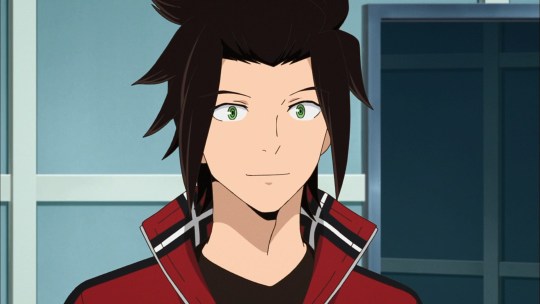

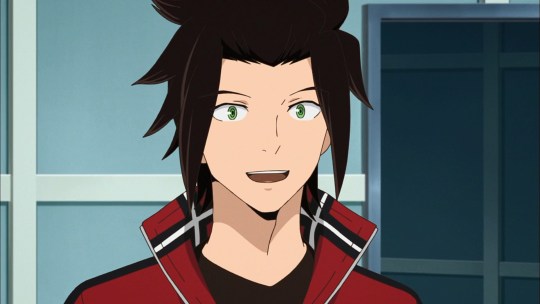


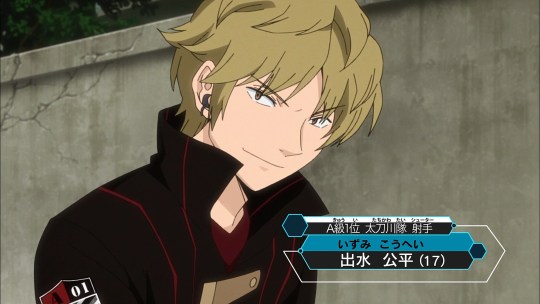



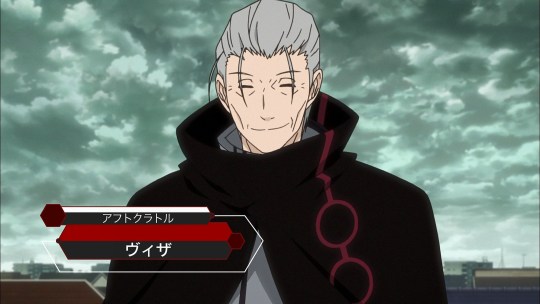
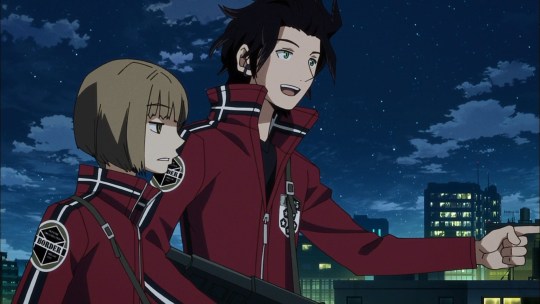








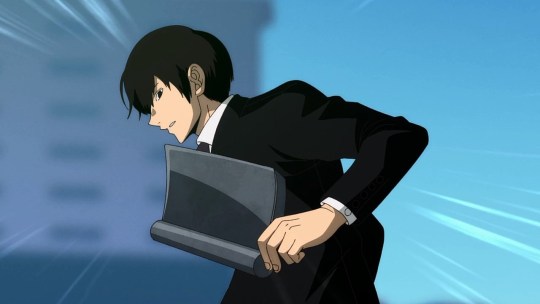

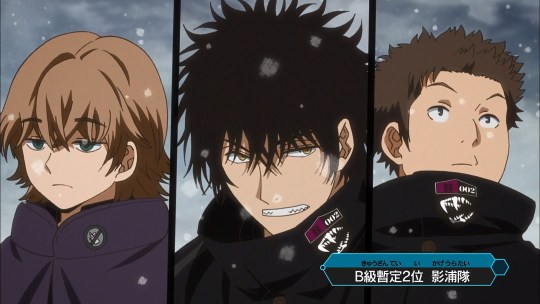




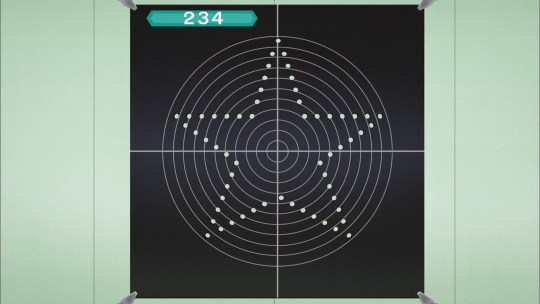



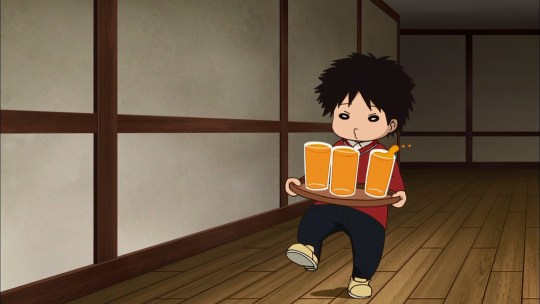






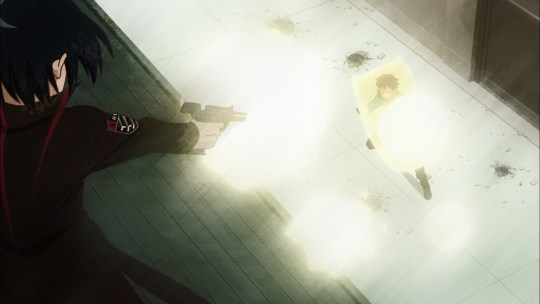


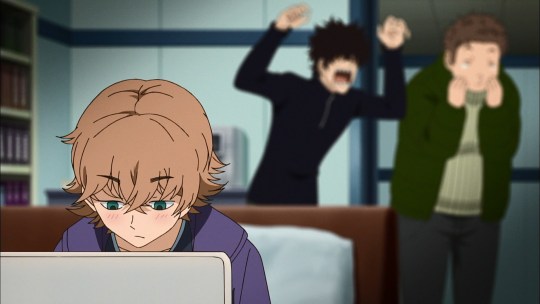





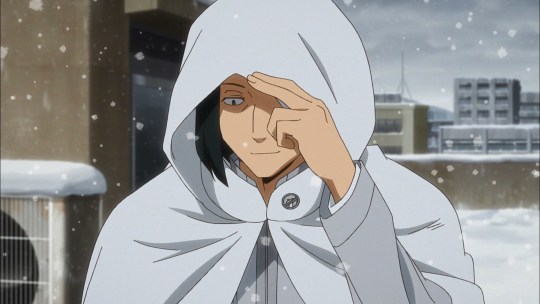
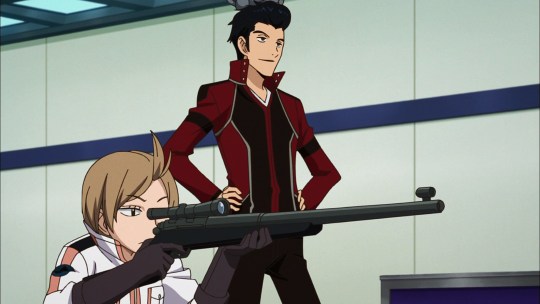
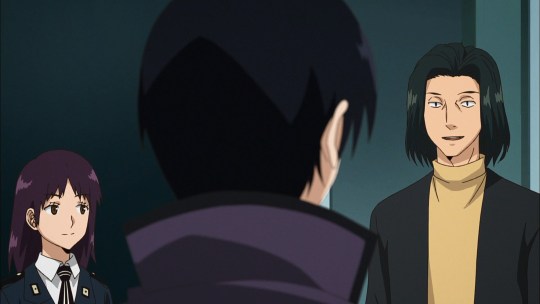
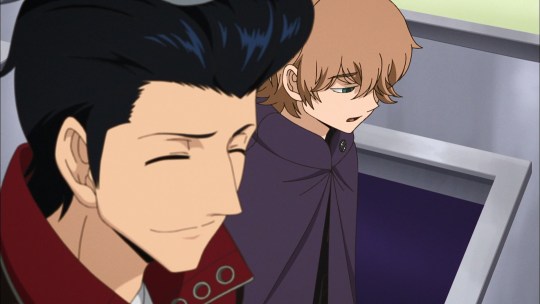



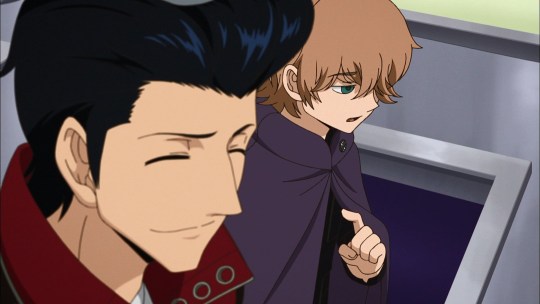



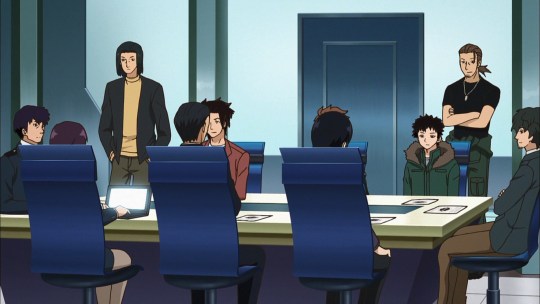
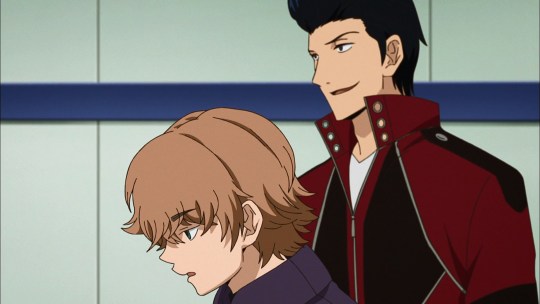


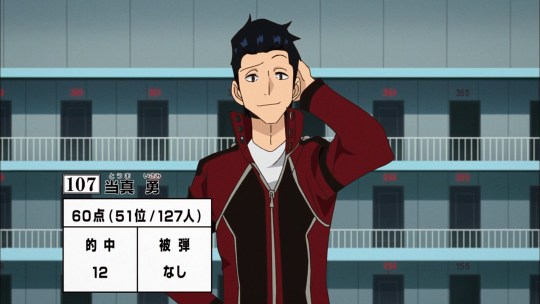

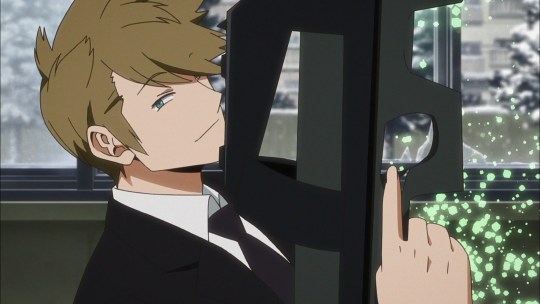


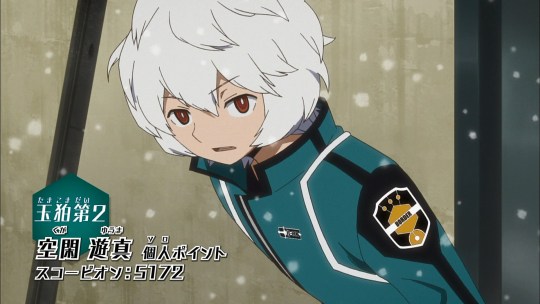


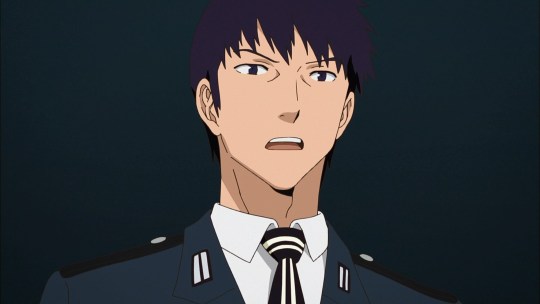
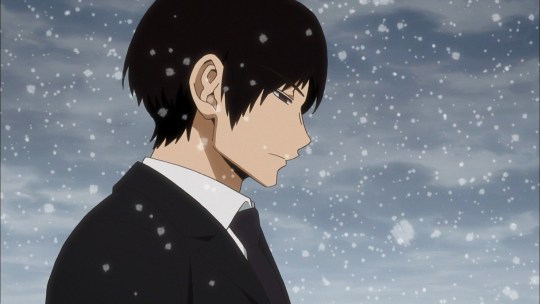
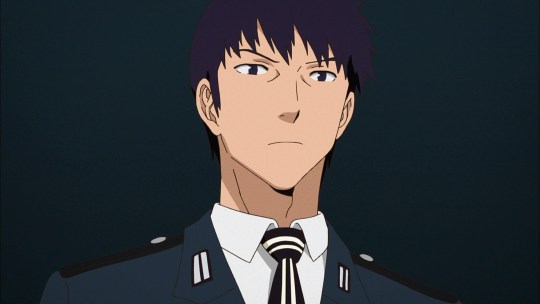






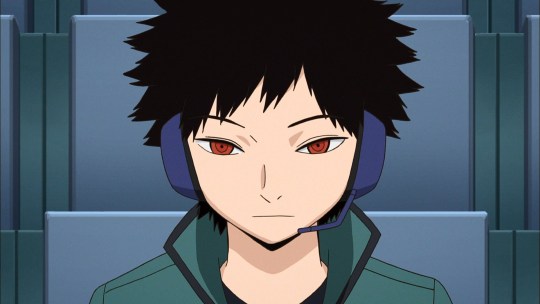





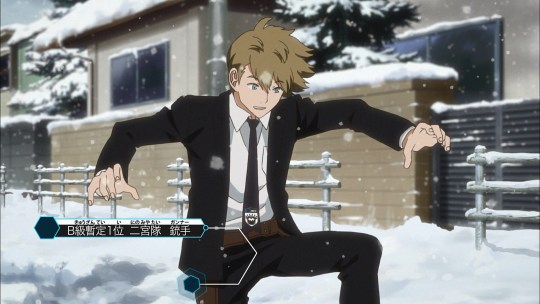

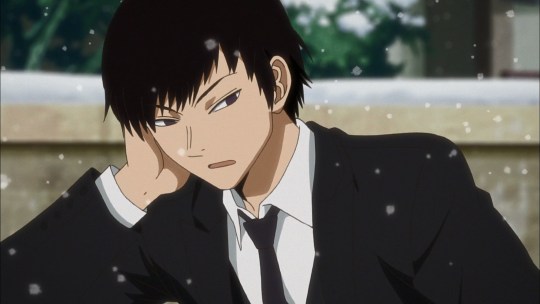


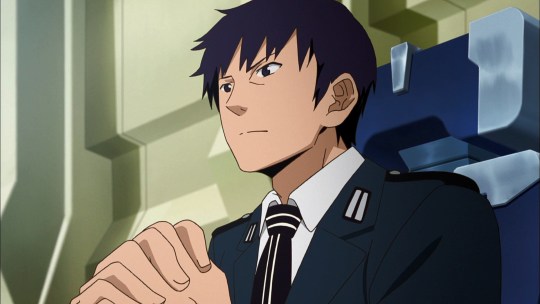

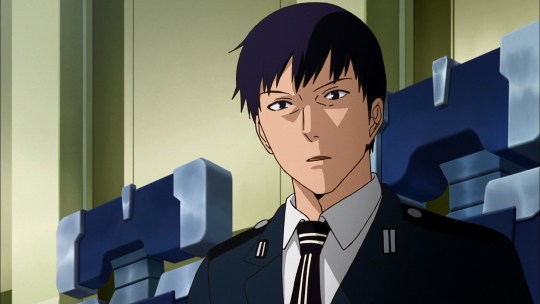
#world trigger#watori#shinoda#shinoda masafumi#masafumi shinoda#kazama#tachikawa#toma#kuga yuma#yuma kuga#arashiyama#arashiyama jun#jin#anime#anime recap#anime cap#ema yuzuru#yuzuru ema#kageura#kageura masato#masato kageura#ninomiya#tsuji#inukai#narasaka toru#toru narasaka
24 notes
·
View notes
Text
Strings of Reflection
The Butterfly and The Spider

The ballroom is constituted of an entangled web, our fated movements of the evening woven into the vastness.
“May I have this dance?” a figure asks with a distorted voice, extending its hand in my direction.
However, the vague outlines of a silhouette my height are the sole features perceivable to me. What is this? How should I respond, when I am unable to read the expression of my partner? Regardless, it would be impolite to turn him down.
And so, I respond with a slight nod, trying to direct my gaze at its eyes or where they should be, since that which distinguishes each human from birth, its face, is formless. Have I finally gone mad?
Once our fingers intertwine, I feel as though something is being stripped away from me, something that no being should ever lose. My limbs go numb and each sensation, I had perceived mere moments ago, has vanished. No longer is my body able to accept touch or give it in return, for what I have become is the marionette of the spider, who twirled me in its luring thread of enslavement.

Even though my shell is being controlled by an undivulged presence, this abnormality is the very thing that gives me the harmony of gliding through the air without knowing the destination.
With this thought, the thought of viewing the checkered marble flooring, not as a battlefield, but a sky, in which creatures dance with the wind, the cocoon begins to unravel. With each step that does not belong to me, I begin to see the true foe before me.
“Do you recognize my presence? The one whom you do not comprehend, yet is all too familiar. The existence with the ability to restrain as well as unshackle. Your greatest companion and rival. Both the butterfly and the spider.”
“Yes, I remember. The true devil is-“

copyright regarding the text
#boogiepop#Boogiepop wa Warawanai#Boogiepop and Others#Boogiepop Doesn't Laugh#Kouhei Kadono#manticore#miyashita touka#Madhouse#Death Parade#Yuzuru Tachikawa#wixoss#tokyo ghoul#light novel#manga#anime#psychological#horror#fantastical#spider#butterfly#thinking anime#drawing with words
3 notes
·
View notes
Photo
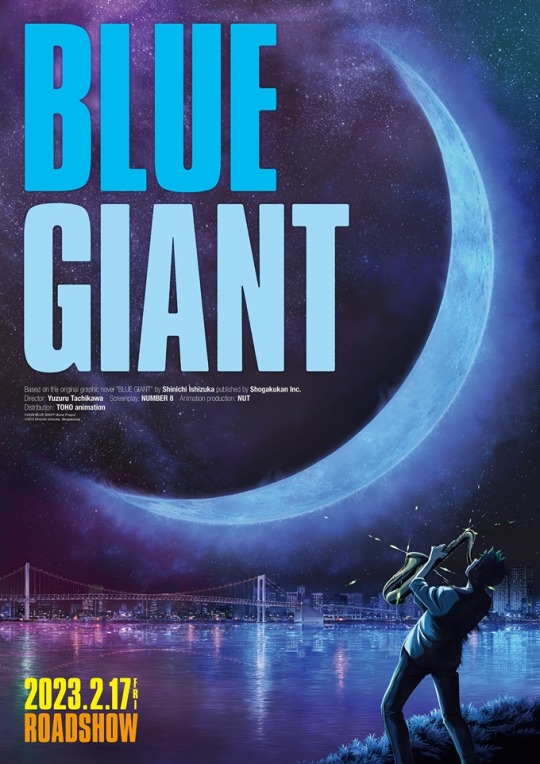
🔴 BLUE GIANT: IL FILM D’ANIMAZIONE USCIRÀ IN GIAPPONE IL 17 FEBBRAIO 2023!
La pellicola è diretta da Yuzuru Tachikawa (Mob Psycho 100, Death Parade) presso lo studio NUT (Deca-Dence, Saga of Tanya the Evil).
Uno studente del terzo anno delle superiori, Dai Miyamoto, il cui cuore è stato toccato dal Jazz, ha continuato a suonare il sassofono da solo a Kawahara, con la pioggia o con il sole, giorno e notte, per molti anni. “Voglio diventare il miglior sassofonista del mondo!” Sforzi, talento, fede, l’ambiente circostante, fortuna… cosa è più importante per raggiungere il proprio obiettivo?
La sceneggiatura è invece a cura di NUMBER 8, che è stato l'editor responsabile del manga e ha lavorato a stretto contatto con l’autore Shinichi Ishizuka in qualità di story director. L’opera è pubblicata in Italia da J-POP Manga.
#blue giant#anime#film#yuzuru tachikawa#shinichi ishizuka#jpop manga#musica#jazz#giappone#animazione
2 notes
·
View notes
Text
Chatty AF 186: Death Parade Retrospective – Part 2
Caitlin, Cy, and Toni celebrate the 10th anniversary of a cult classic and dig into its portrayals of women, motherhood, and the question of transformative justice.
Editor’s Note: This set of episodes was recorded before Cypress changed their name; the transcript will reflect both in their updated form.
Episode Information
Date Recorded: October 30th 2022
Hosts: Caitlin, Toni, Cy
Episode Breakdown
0:00:00 Intros
0:00:13 Harsher punishments for women
0:18:47 Portrayal of motherhood
0:27:11 Carceral Feminism
0:35:42 Reform (or lack thereof)
0:44:23 Buddhism: Transformative justice and cycles of abuse
0:57:17 Final thoughts
0:59:13 Outro
11 notes
·
View notes
Text
Blue Giant and Yuzuru Tachikawa’s Jazz

Blue Giant has been the toast of the animation festival circuit this past year and it’s easy to see why. It takes what can at times feel like an intimidating subject—jazz performance—and explores it in a dynamic, yet accessible way that will have both diehard aficionados and complete newcomers to the music genre tapping their toes and tutting their fingers—and getting a little misty-eyed too.
The story, adapted from the manga series by Shinichi Ishizuka, follows a trio of eighteen-year-olds striving to make their sound heard in Tokyo’s aging jazz scene before leaving their teens behind. Tenor saxophonist Dai is the driving force of the group and comes up with their name, Jass, which bespeaks the kind of overconfidence only afforded to youth. Counterintuitively, Dai was a member of the basketball team in high school rather than the brass band, but that didn’t stop him from falling in love with the sax in first year and practicing obsessively for the next three. Drummer Tamada has even less experience, not coming to his instrument until about twenty minutes into the film! Inspired by Dai’s enthusiasm, the previously noncommittal university student discovers his own passion for the music that so captivates his childhood friend, and doesn’t let being outclassed by an elementary schooler dampen his ambitions. Of the three, only Yukinori on keys has any kind of experience—fourteen years, to be exact, with the chops and condescending attitude to go with it. All three are compelling, well-defined characters, each in his own distinct way, and although Yukinori is the most developed, Dai holds the film together, while Tamada grants viewers an entry point into this fascinating world. Or, as director Yuzuru Tachikawa phrased it when asked to pick his favorite: ”Personally, I relate most to Tamada, but I really love the character of Yukinori, and I look up to Dai.” There is also an utterly delightful cast of supporting characters, most of whom are middle-aged to senior in what is a rare showing for a medium that tends to focus on youth. It’s clear through the small details and gestures that each of these weathered individuals has a story of their own that is worthy of a spin-off episode.
(Read More)
#Anime#Reviews#Anime Movies#Anime Reviews#Blue Giant#Jazz#Hiromi Uehara#Yuzuru Tachikawa#Anime Article#Anime Blog#Articles#Christian Anime#Christian Otaku#Author: claire
1 note
·
View note
Text
Blue Giant (Film Review)
Continue reading Blue Giant (Film Review)
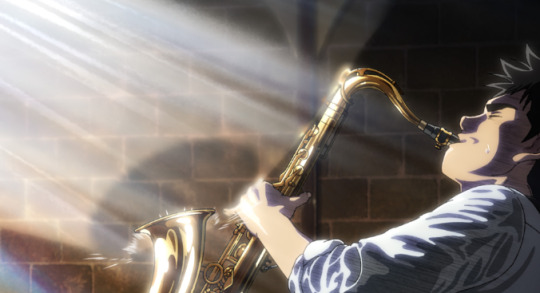
View On WordPress
0 notes
Text
BLUE GIANT:
Young jazz prodigy
Starts a band in Tokyo
Long road to success
youtube
#blue giant#random richards#poem#haiku#poetry#haiku poem#poets on tumblr#haiku poetry#haiku form#poetic#anime#yuzuru tachikawa#NUMBER 8#Shin’ichi ishizuka#shinichi ishizuka#jazz#shotaro mamiya#Amane Okayama#yuki yamada#Youtube
0 notes
Text
REVIEW: Blue Giant (2023)
A Film directed by Yuzuru Tachikawa
The moment that I first saw the trailer for Yuzuru Tachikawa’s film Blue Giant, I knew that it was something that I would absolutely need to see. I’m not even a fan of jazz music, have never read the manga that the film is based on, and am not too familiar with anyone that made it. That all said, Blue Giant is the sort of property that absolutely needs support…

View On WordPress
#animated#animated film#anime#anime adaptation#Blue Giant#film#GKIDS#Japan#Japanese#jazz#jazz music#Movie#Movie Review#Shinichi Ishizuka#Yuzuru Tachikawa
1 note
·
View note